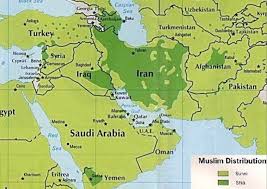
It wasn’t long ago that President Obama touted Yemen as a success in the fight against terrorism. “This strategy of taking out terrorists who threaten us while supporting partners on the front lines is one that we have successfully pursued in Yemen and Somalia for years,” he said in a major speech in September, outlining his approach to defeating Islamic State. Within weeks of that pronouncement, the Iranian-backed Houthi militia occupied the capital city of San’a. Now matters are getting worse.
On Tuesday Houthi forces seized the presidential palace along with the headquarters of the presidential guard, taking dozens of hostages and seizing an arsenal of tanks and artillery. The country’s nominal president, the U.S.-backed Abed Rabbo Mansour Hadi, was last seen inside his residence; his fate wasn’t clear as we went to press. The U.S. Embassy in San’a reported that Houthi gunmen fired on one of its diplomatic vehicles, though nobody was injured.
This comes days after the West was brutally reminded in Paris that it cannot remain indifferent to chaos in a poor Arab country. At least one of the Kouachi brothers had weapons training in Yemen, and the Yemen-based branch of al Qaeda took credit for sponsoring the attack on the editorial offices of Charlie Hebdo. If the Houthi have now overthrown our partner government in Yemen, we’ll need either a new partner or a new strategy.
The Houthi are often described as a sect or a tribe. But it’s more accurate to say they are a radical Shiite political movement similar to Hezbollah, whose guiding slogan is “God is Great, Death to America, Death to Israel, Curse on the Jews, Victory to Islam.” Last year, the Houthi gained control of the Yemeni port city of Al Hudaydah, just north of the Bab El-Mandab strait separating the Red Sea from the Indian Ocean. Along with the Strait of Hormuz, this gives Iran the ability to threaten both maritime chokepoints surrounding the Arabian peninsula.
One temptation will be to see a silver lining in the Houthi takeover, on the theory that the Shiite group is at war with al Qaeda and its radical Sunni affiliates. But the “let Allah sort it out” approach to foreign policy espoused by Sarah Palin won’t work, given that neither side is likely to defeat the other and a de facto partition of the country into two radical camps would complicate and multiply the dangers. The Hadi government cooperated with U.S. forces targeting al Qaeda in Yemen, but the Houthi won’t do the same. We could face two terrorist havens.
What should the U.S. do? The Obama Administration should insist that the Houthi guarantee Mr. Hadi’s safety and release him if he’s in custody. The U.S. and Saudi Arabia may also need to coordinate a strategy to dislodge the Houthi from San’a. The collapse of Yemen is another reminder, along with Iraq, that counterterrorism-lite doesn’t work, and that the U.S. has to do more to prop up its allies, if necessary with troops on the ground.
If it can’t be reversed, the fall of Yemen takes the Mideast closer to a regional war between radical Sunnis and radical Shiites, with U.S. allies caught in the middle. It’s an illusion to think that if we withdraw the carnage will stay over there.

